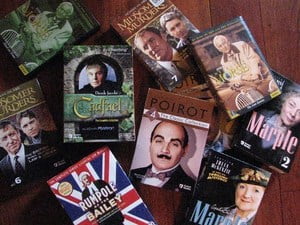The human brain is an infinitely complex organ. Though there is much research devoted to how and why our minds work the way they do, not all the mysteries surrounding the brain have been solved, and often the study of brain ailments such as cancer, strokes and learning disabilities bring only more questions. This article deals with only one brain issue, visual aphasia.
What is it?
Word blindness, also known as visual aphasia, alexia, text blindness or acquired dyslexia, is a complex acquired neurological condition. It is often brought on by strokes or lesions on the brain. Some people also use the term improperly to describe people with severe classic dyslexia.
Visual aphasia is characterized by being unable to decipher written words, or being able to only discern certain words. Oddly, it can prevent people from being able to read, but not necessarily prevent them from being able to write. When following a stroke, it is the visual-association areas in the back of the brain that are affected, generally on the left side.
Challenges
A major problem with being able to treat visual aphasia is that it can vary so greatly from one person to the next, and many treatments do not provide adequate opportunities to customize to fit each individual.
It is often commonly overlooked following a stroke since many patients are suffering from partial paralysis and verbal aphasia. Medical practitioners do not always consider being unable to read following a stroke “:that bad”.
Issues people with visual aphasia face after brain injury is the inability to pay bills, read street signs in order to get around, follow written instructions such as recipes or directions and the loss of a pleasurable past time due to being unable to read.
Treatment is challenging since this event that caused the visual aphasia is often accompanied by other neurological damage including verbal aphasia.
Visual vocabulary for aphasia, or ViVA, uses a visual library with a computer and PDA to help the aphasic patient map out their day using pictures rather than words. This method of treatment is still being researched for it’s efficacy with a varied populations and for several types of aphasia.
Another promising treatment is tactile-kinesthetic reading, where visual aphasia sufferers are taught the correct way to write letters, then they use a capped pen to trace the letters one at time onto the palm of their opposite hand until they are able to read a word one letter at a time. It is believed this therapy works because is causes the brain to from new neural pathways and kinetic memories.
It is clear that much more research into, and awareness of, the causes and treatments for visual aphasia is required to produce more favorable outcomes for brain injury and stroke survivors who become afflicted with this disorder.
Citations
Sonya Nikolova, Jordan Boyd-Graber and Perry R. Cook, The Design of ViVA: a Mixed-Initiative
Visual Vocabulary for Aphasia. CHI 2009-Focus of Works in Progress.
What is Word Blindness? Wise Geek.
Jose Vega, Alexia, About.com Stroke.
New Therapy Helps Victims of Alexia. ABC News.
Reading Rehabilitations After Stroke, Stroke Association.





